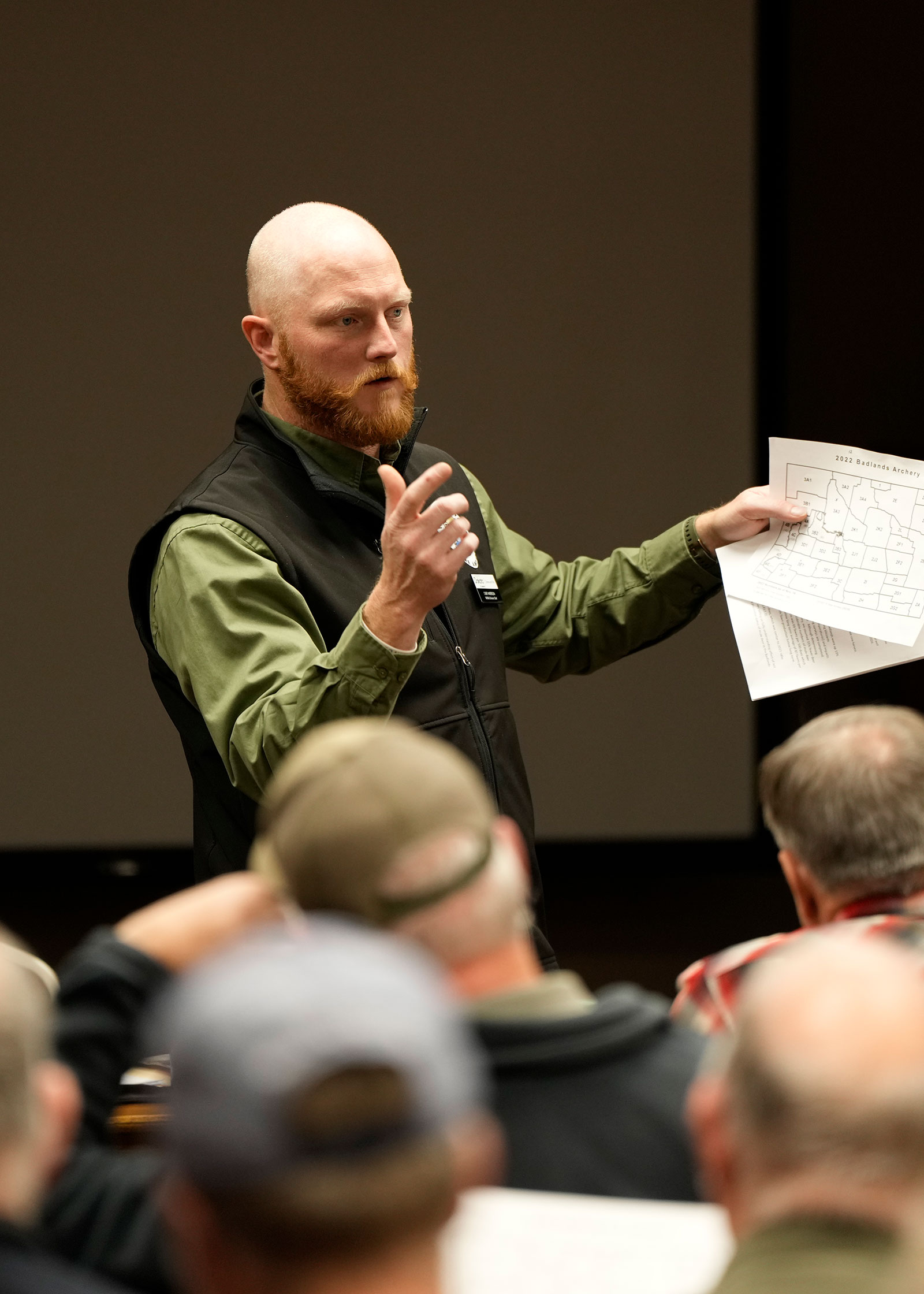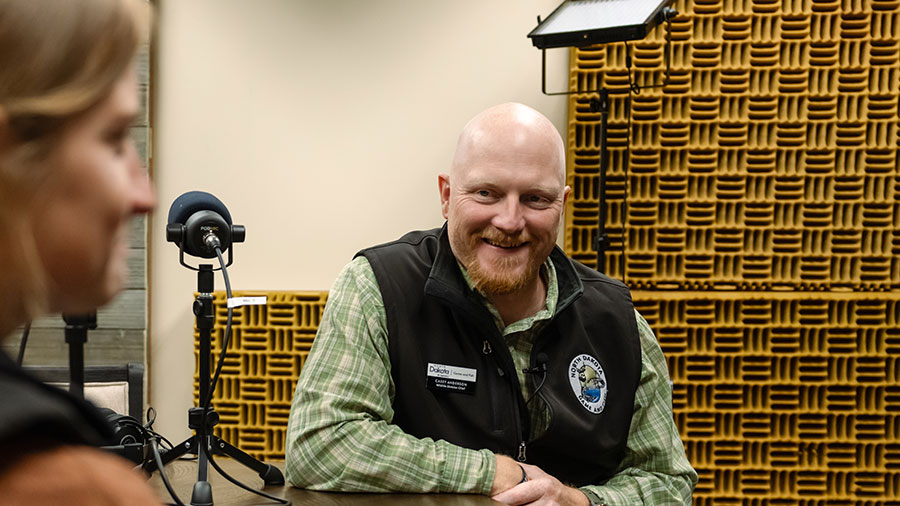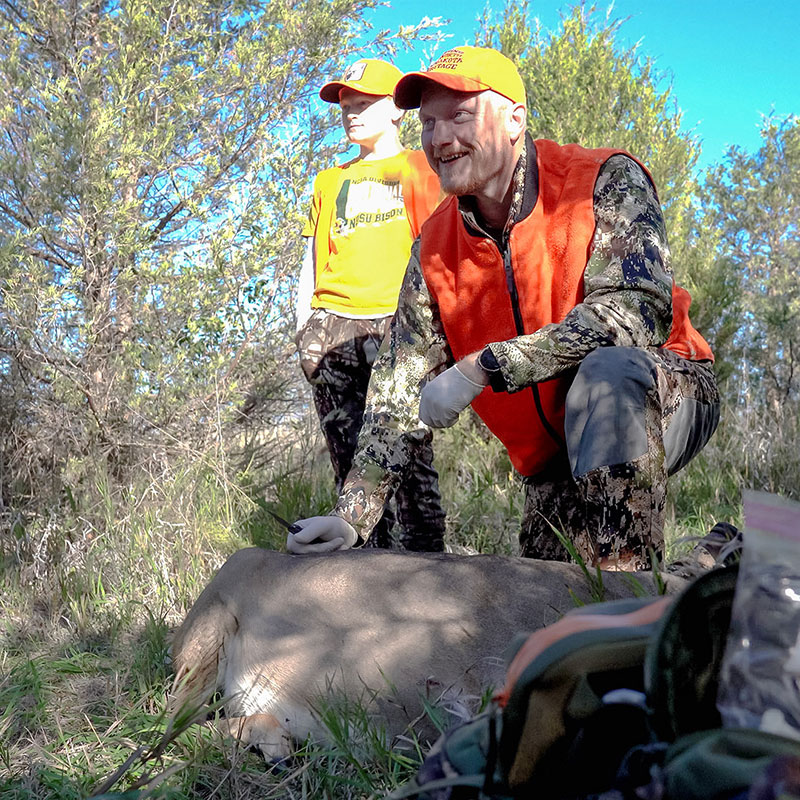Casey Anderson Named Deputy Director
Ron Wilson

Jeb Williams, Game and Fish Department director, announced in early June the appointment of Casey Anderson to the agency’s deputy director position.
Anderson has been with the Department for 24 years, seven years as assistant wildlife division chief, and for the last four years he led the wildlife division as chief.
“Casey Anderson brings a combination of field and administrative experience, strong leadership, and an unwavering commitment to North Dakota’s fish and wildlife resources,” Williams said. “His ability to communicate with both the public and staff, coupled with a lifelong passion for our state, makes him exceptionally well-suited to step into the deputy director position.”
North Dakota OUTDOORS interviewed Anderson about the promotion and what’s around the corner.
NDO: First of all, congratulations. When you started as a wildlife seasonal in 2001 in Riverdale spraying noxious weeds and mending fences, did you ever imagine becoming deputy director?
Anderson: I did not, to be honest. Riverdale was close to home, and I thought that’s where I wanted to stay, continue to get my hands dirty, work with habitat, work with critters … do the things that I studied in school.
NDO: You’ve held seven positions with Game and Fish, the last of which was wildlife division chief. Does your focus change now that you’ve taken yet another step up the ladder?
Anderson: As I gained more and more knowledge in the different positions I held, I’ve gotten to a point where it’s a necessity to focus more on the big picture, focus more on the future of the Department versus what’s going to happen this fall. This position just gives you somewhat of a different perspective, although the goal remains that I’m in it for the resource and maintaining North Dakota’s outdoor opportunities.

NDO: You’re no stranger to the hurdles the agency has had to face and will continue to face. Do those struggles remain the same?
Anderson: North Dakota’s landscape has shifted. While private landowners have to make business decisions on the landscape, there’s no mistaking that the overall habitat base, where 93% of the land in the state is privately owned, has shifted. We’ve lost habitat across North Dakota, but more so in some areas than others. We’ve seen this, maybe more than with anything else, with our deer populations. We’ve been getting into more conservative deer license numbers — maybe not conservative enough for some people — with the intention of letting that population rebound as much as possible with the amount of habitat we have left. That’s kind of the kicker.
There’s only so far they’re going to be able to rebound before they’re either causing too many conflicts on the landscape because there isn’t enough habitat to spread them out, or they just can’t reproduce beyond a certain point because of the available habitat. I also think we need to continue the effort of strengthening hunter-landowner relations. Hunter-landowner relations need to be continually worked on, but with the shift from rural to urban, which is happening everywhere in the nation, those relationships take a lot more effort, especially for the hunters than it used to. It used to be those relationships were with an uncle, grandpa or grandpa’s dad’s friends. You had those hunting contacts that were ingrained in your family system. And I think a lot of that has been lost. Today, it takes more work on the hunter’s part to keep those relationships going.

